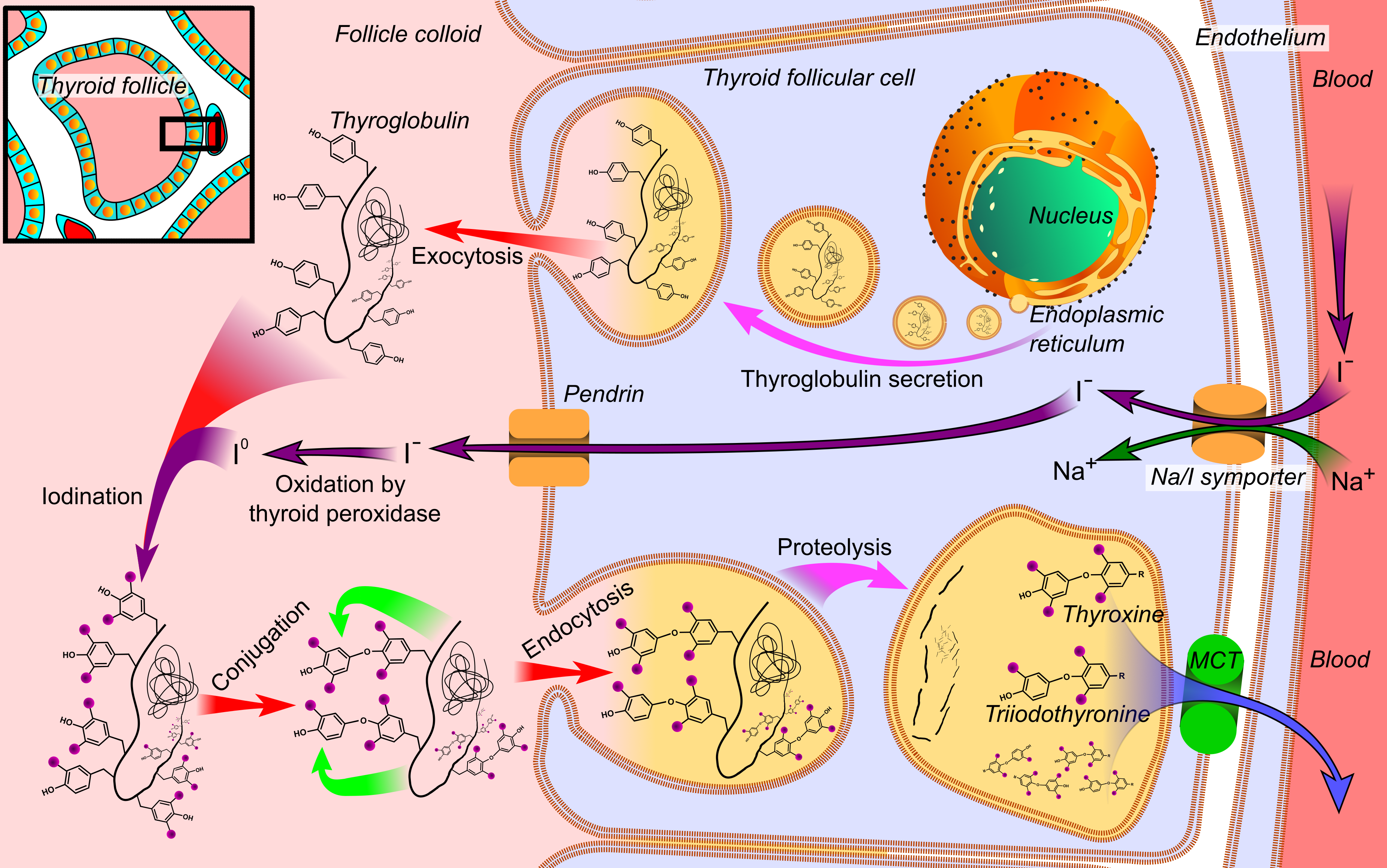|
Fenoprofen
Fenoprofen, sold under the brand name Nalfon among others, is a nonsteroidal anti-inflammatory drug (NSAID). Fenoprofen calcium is used for symptomatic relief for rheumatoid arthritis, osteoarthritis, and mild to moderate pain. It has also been used to treat postoperative pain. It is available as a generic medication. Pharmacology Decreases inflammation, pain, and fever, probably through inhibition of cyclooxygenase (COX-2 inhibitor) activity and prostaglandin synthesis. Chirality and biological activity Fenoprofen is chiral drug with one stereogenic center and exists as chiral twins. (S)-enantiomer has the desired pharmacological action where as the (R)-isomer is less active. It is observed that there is stereoselective bioconversion of the (R)- to (S)-fenoprofen. This stereoselective conversion is called chiral inversion. Contraindications History of significantly impaired renal function; patients with known hypersensitivity to any component of the product; patients who h ... [...More Info...] [...Related Items...] OR: [Wikipedia] [Google] [Baidu] |
Chiral Inversion
Chiral inversion is the process of conversion of one enantiomer of a chiral molecule to its mirror-image version with no other change in the molecule. Chiral inversion happens depending on various factors (viz. biological-, solvent-, light-, temperature- induced, etc.) and the energy barrier energy barrier associated with the stereogenic element present in the chiral molecule. 2-Arylpropionic acid nonsteroidal anti-inflammatory drugs (NSAIDs) provide one of the best pharmaceutical examples of chiral inversion. Chirality is attributed to a molecule due to the presence of a stereogenic element (viz. center, planar, helical, or axis). Many pharmaceutical drugs are chiral and have a labile (configurationally unstable) stereogenic element. Chiral compounds with stereogenic center are found to have high energy barriers for inversion and generally undergo biologically mediated chiral inversion. While compounds with helical or planar chirality have low energy barriers and chiral inver ... [...More Info...] [...Related Items...] OR: [Wikipedia] [Google] [Baidu] |
Nonsteroidal Anti-inflammatory Drug
Non-steroidal anti-inflammatory drugs (NSAID) are members of a Indication (medicine), therapeutic drug class which Analgesic, reduces pain, Anti-inflammatory, decreases inflammation, Antipyretic, decreases fever, and Antithrombotic, prevents blood clots. Side effects depend on the specific drug, its dose and duration of use, but largely include an increased risk of Stomach ulcers, gastrointestinal ulcers and bleeds, heart attack, and kidney disease. The term ''non-steroidal'', common from around 1960, distinguishes these drugs from corticosteroids, another class of anti-inflammatory drugs, which during the 1950s had acquired a bad reputation due to overuse and side-effect problems after their introduction in 1948. NSAIDs work by inhibiting the activity of cyclooxygenase enzymes (the COX-1 and COX-2 isozyme, isoenzymes). In cells, these enzymes are involved in the synthesis of key biological mediators, namely prostaglandins, which are involved in inflammation, and thromboxanes, ... [...More Info...] [...Related Items...] OR: [Wikipedia] [Google] [Baidu] |
Oral Administration
Oral administration is a route of administration whereby a substance is taken through the Human mouth, mouth, swallowed, and then processed via the digestive system. This is a common route of administration for many medications. Oral administration can be easier and less painful than other routes of administration, such as Injection (medicine), injection. However, the onset of action is relatively low, and the effectiveness is reduced if it is not absorbed properly in the digestive system, or if it is broken down by digestive enzymes before it can reach the bloodstream. Some medications may cause gastrointestinal side effects, such as nausea or vomiting, when taken orally. Oral administration can also only be applied to conscious patients, and patients able to swallow. Terminology ''Per os'' (; ''P.O.'') is an adverbial phrase meaning literally from Latin "through the mouth" or "by mouth". The expression is used in medicine to describe a treatment that is taken orally (but not ... [...More Info...] [...Related Items...] OR: [Wikipedia] [Google] [Baidu] |
Hydantoins
Hydantoin, or glycolylurea, is a heterocyclic organic compound with the formula CH2C(O)NHC(O)NH. It is a colorless solid that arises from the reaction of glycolic acid and urea. It is an oxidized derivative of imidazolidine. In a more general sense, hydantoins can refer to groups or a class of compounds with the same ring structure as the parent compound. For example, phenytoin (mentioned below) has two phenyl groups substituted onto the number 5 carbon in a hydantoin molecule. Synthesis Hydantoin was first isolated in 1861 by Adolf von Baeyer in the course of his study of uric acid. He obtained it by hydrogenation of allantoin, hence the name. : Friedrich Urech synthesized 5-methylhydantoin in 1873 from alanine sulfate and potassium cyanate in what is now known as the Urech hydantoin synthesis. The method is very similar to the modern route using alkyl and arylcyanates. The 5,5-dimethyl compound can also be obtained from acetone cyanohydrin (also discovered by Urech: see c ... [...More Info...] [...Related Items...] OR: [Wikipedia] [Google] [Baidu] |
Thalidomide
Thalidomide, sold under the brand names Contergan and Thalomid among others, is an oral administered medication used to treat a number of cancers (e.g., multiple myeloma), graft-versus-host disease, and many skin disorders (e.g., complications of leprosy such as skin lesions). Updated as required. Thalidomide has been used to treat conditions associated with HIV: aphthous ulcers, HIV-associated wasting syndrome, diarrhea, and Kaposi's sarcoma, but increases in HIV viral load have been reported. Common side effects include sleepiness, rash, and dizziness. Severe side effects include tumor lysis syndrome, blood clots, and peripheral neuropathy. Thalidomide is a known human teratogen and carries an extremely high risk of severe, life-threatening birth defects if administered or taken during pregnancy. It causes skeletal deformities such as Amelia (birth defect), amelia (absence of legs and/or arms), absence of bones, and phocomelia (malformation of the limbs). A single dose of t ... [...More Info...] [...Related Items...] OR: [Wikipedia] [Google] [Baidu] |
Ketoprofen
Ketoprofen is one of the propionic acid class of nonsteroidal anti-inflammatory drugs (NSAID) with analgesic and antipyretic effects. It acts by inhibiting the body's production of prostaglandin. It was patented in 1967 and approved for medical use in 1980. Medical uses Ketoprofen is generally prescribed for arthritis-related inflammatory pains or severe toothaches that result in the inflammation of the gums. Ketoprofen topical patches are being used for treatment of musculoskeletal pain. Ketoprofen can also be used for treatment of some pain, especially nerve pain such as sciatica, postherpetic neuralgia and referred pain for radiculopathy, in the form of a cream, ointment, liquid, spray, or gel, which may also contain ketamine and lidocaine, along with other agents which may be useful, such as cyclobenzaprine, amitriptyline, acyclovir, gabapentin, orphenadrine and other drugs used as NSAIDs or adjuvant, atypical or potentiators for pain treatment. Efficacy A 2013 syst ... [...More Info...] [...Related Items...] OR: [Wikipedia] [Google] [Baidu] |
Ibuprofen
Ibuprofen is a nonsteroidal anti-inflammatory drug (NSAID) that is used to relieve pain, fever, and inflammation. This includes dysmenorrhea, painful menstrual periods, migraines, and rheumatoid arthritis. It can be taken oral administration, orally (by mouth) or Intravenous therapy, intravenously. It typically begins working within an hour. Common side effects include heartburn, nausea, indigestion, and abdominal pain. Potential side effects include gastrointestinal bleeding. Long-term use has been associated with kidney failure, and rarely liver failure, and it can exacerbate the condition of people with heart failure. At low doses, it does not appear to increase the risk of myocardial infarction (heart attack); however, at higher doses it may. Ibuprofen can also worsen asthma. While its safety in early pregnancy is unclear, it appears to be harmful in later pregnancy, so it is not recommended during that period. It works by inhibiting the production of prostaglandins by dec ... [...More Info...] [...Related Items...] OR: [Wikipedia] [Google] [Baidu] |
Triiodothyronine
Triiodothyronine, also known as T3, is a thyroid hormone. It affects almost every physiological process in the body, including growth and development, metabolism, body temperature, and heart rate. Production of T3 and its prohormone thyroxine (T4) is activated by thyroid-stimulating hormone (TSH), which is released from the anterior pituitary gland. This pathway is part of a closed-loop feedback process: Elevated concentrations of T3, and T4 in the blood plasma inhibit the production of TSH in the anterior pituitary gland. As concentrations of these hormones decrease, the anterior pituitary gland increases production of TSH, and by these processes, a feedback control system stabilizes the level of thyroid hormones in the bloodstream. At the cellular level, T3 is the body's more active and potent thyroid hormone. T3 helps deliver oxygen and energy to all of the body's cells, its effects on target tissues being roughly four times more potent than those of T4. Of the thyroid ... [...More Info...] [...Related Items...] OR: [Wikipedia] [Google] [Baidu] |
Citalopram
Citalopram, sold under the brand name Celexa among others, is an antidepressant of the selective serotonin reuptake inhibitor (SSRI) class. It is used to treat major depressive disorder, obsessive compulsive disorder, panic disorder, and social phobia. The antidepressant effects may take one to four weeks to occur. It is typically taken oral administration, orally (swallowed by mouth). In some Europe, European countries, it is sometimes given intravenous, intravenously (injected into a vein) to initiate treatment, before switching to the oral route of administration for continuation of treatment. It has also been used intravenously in other parts of the world in some other circumstances. Common side effects include nausea, trouble sleeping, sexual problems, shakiness, feeling tired, and sweating. Serious side effects include an increased risk of suicide in those under the age of 25, serotonin syndrome, glaucoma, and QT prolongation. It should not be used in persons who take o ... [...More Info...] [...Related Items...] OR: [Wikipedia] [Google] [Baidu] |
Fluoxetine
Fluoxetine, sold under the brand name Prozac, among others, is an Antidepressant, antidepressant medication of the selective serotonin reuptake inhibitor (SSRI) class used for the treatment of major depressive disorder, Anxiety disorder, anxiety, obsessive–compulsive disorder (OCD), panic disorder, premenstrual dysphoric disorder, and bulimia nervosa. It is also approved for treatment of major depressive disorder in adolescents and children 8 years of age and over. It has also been used to treat premature ejaculation. Fluoxetine is oral administration, taken by mouth. Common side effects include anorexia (symptom), loss of appetite, nausea, diarrhea, headache, insomnia, trouble sleeping, xerostomia, dry mouth, and sexual dysfunction. Serious side effects include serotonin syndrome, mania, seizures, an increased risk of suicide, suicidal behavior in people under 25 years old, and an increased risk of bleeding. Antidepressant discontinuation syndrome is less likely to occur ... [...More Info...] [...Related Items...] OR: [Wikipedia] [Google] [Baidu] |
Phenobarbital
Phenobarbital, also known as phenobarbitone or phenobarb, sold under the brand name Luminal among others, is a medication of the barbiturate type. It is recommended by the World Health Organization (WHO) for the treatment of certain types of epilepsy in developing country, developing countries. In the developed world, it is commonly used to treat seizures in neonatal, young children, while other medications are generally used in older children and adults. It is also used for veterinary purposes. It may be administered by slow intravenous therapy#Infusion, intravenous infusion (IV infusion), intramuscularly (IM), or oral administration, orally (swallowed by mouth). Subcutaneous administration is not recommended. The IV or IM (injectable forms) may be used to treat status epilepticus if other drugs fail to achieve satisfactory results. Phenobarbital is occasionally used to treat insomnia, anxiety disorder, anxiety, and benzodiazepine withdrawal (as well as withdrawal from certa ... [...More Info...] [...Related Items...] OR: [Wikipedia] [Google] [Baidu] |







